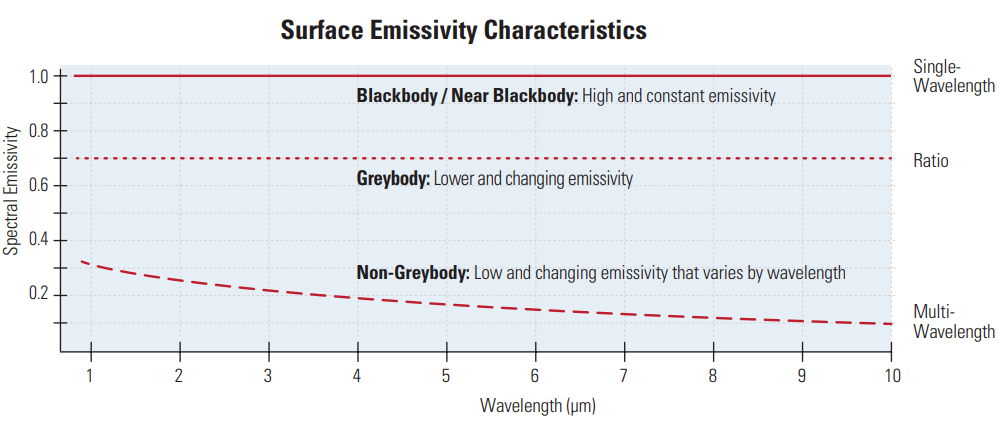The emissivity coefficient ε indicates the radiation of heat from a grey body according the stefan boltzmann law compared with the radiation of heat from a ideal black body with the emissivity coefficient ε 1.
Emissivity of plastic sheet.
A black body is a material that is a perfect emitter of heat energy and has an emissivity value of 1.
Emissivity values for common materials.
The emissive and reflective behavior of most materials is similar in the visible and infrared regions of the electromagnetic spectrum.
A range of emissivity values is usually given for many materials whose emissivity can be affected by surface roughness or finish.
A material with an emissivity value of 0 would be considered a perfect thermal mirror.
Since the emissivity of a material will vary as a function of temperature and surface finish the values in these tables should be used only as a guide for relative or delta measurements.
The total emissivity for metals non metals and common building materials are given.
Emitted energy indicates the temperature of the object.
The emissivity coefficient ε for some common materials can be found in the table below.
To optimize the surface temperature measurement of a material.
Emissivity can have a value from 0 shiny mirror to 1 0 blackbody.
Additionally thin sheets of material such as plastics may be semi transparent in the infrared and therefore have reduced emissivity.
A diversity of applications from electrical inspections thermal environmental studies to building roof thermography ir refractory evaluations to inspecting mechanical systems process monitoring and control to equine thermography horse thermography infrared condition monitoring to non destructive testing to research and development from security and surveillance to building diagnostics.
For example if an object had the potential to emit 100 units of energy but only emits 90 units in the real world then that object would have an emissivity.
For example a plastic material with emissivity 0 92 has reflectivity 0 08.
If reflectivity increases emissivity must decrease.
Surface contamination such as dust oil films or other agents will affect the actual emissivity of your material.
Emissivity values of common materials material emissivity aluminum polished 0 05.
Most organic painted or oxidized surfaces have emissivity values close to 0 95.
Additionally thin sheets of material such as plastics may be semi transparent in the infrared and therefore have reduced emissivity.
A range of emissivity values is usually given for many materials whose emissivity can be affected by surface roughness or finish.
To optimize the surface temperature measurement of a material.
The emissivity information was determined under ideal conditions.
Note that the emissivity coefficients for some products varies with the temperature.
Emissivity is the measure of an object s ability to emit infrared energy.



























